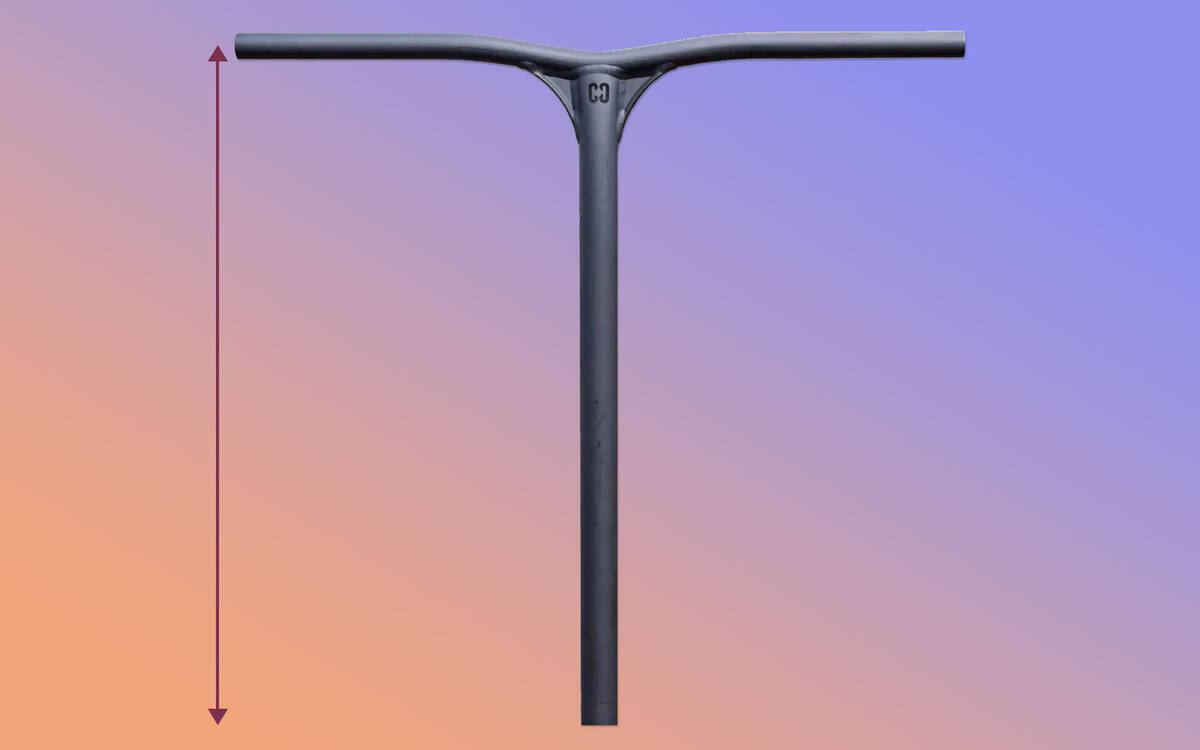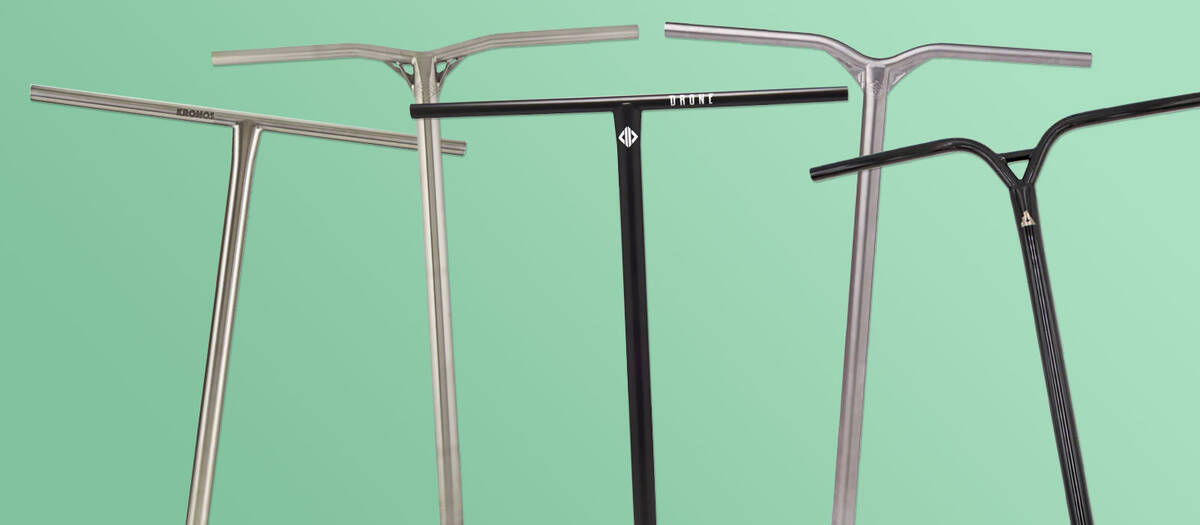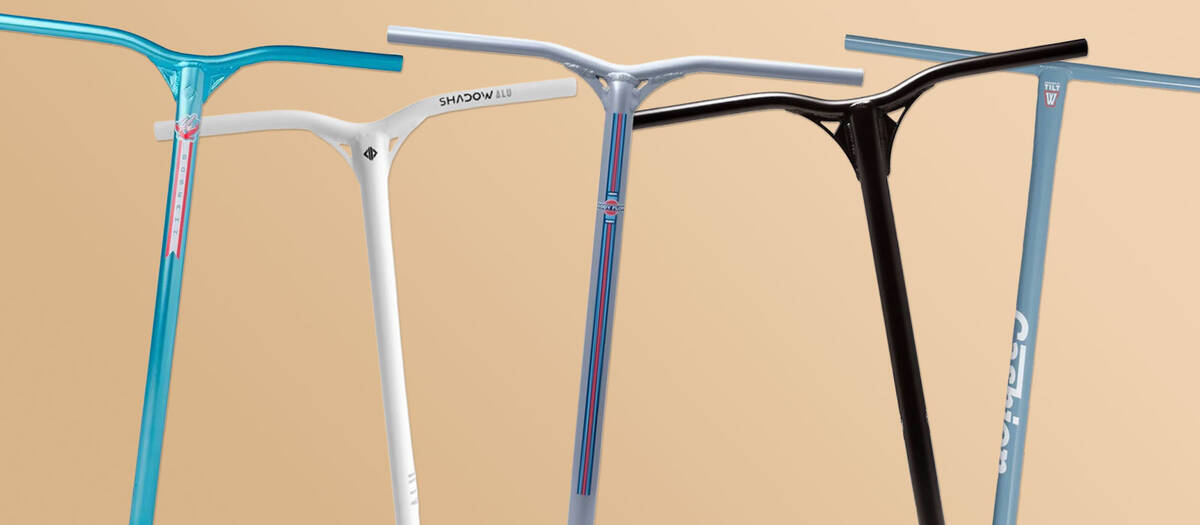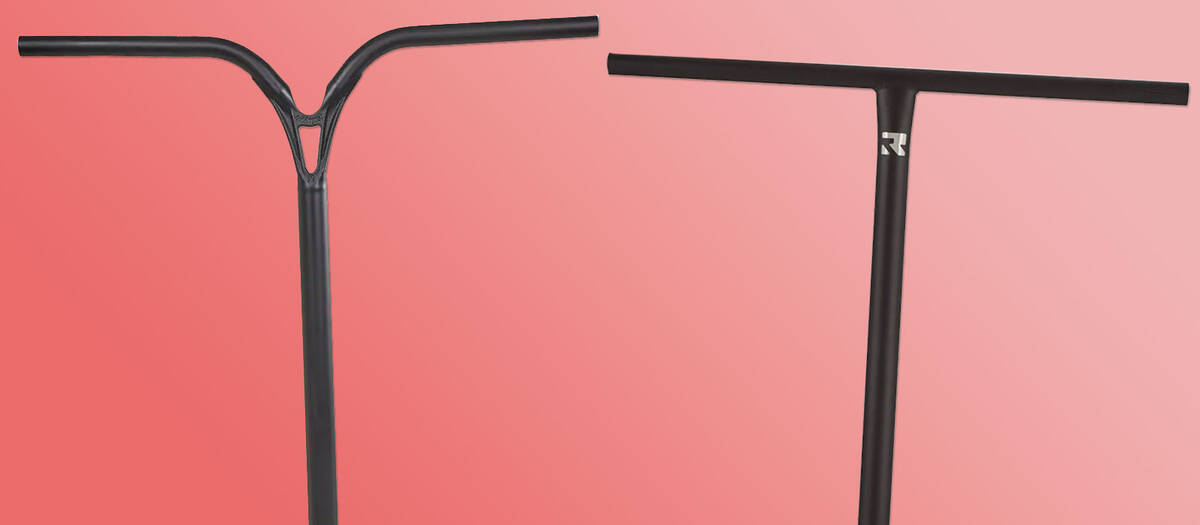Stunt Scooter Bars Purchasing Guide
Welcome to our all-inclusive guide for buying stunt scooter bars. We aim to assist you in understanding the diverse range of options, simplifying your choice of the perfect scooter bar.
We will clarify any queries you might have before you buy a new stunt scooter bar. You'll discover essential elements such as bar height, compatibility, and bar materials. Prepare to enhance your scooter with the finest bar you can get!
Overview
Overview
Determining the Ideal Scooter Bar Height

The height of a stunt scooter bar is crucial when selecting the correct bar. Your riding style and comfort are significantly affected by the bar height, so paying special attention during selection is advisable.
Bar height largely depends on individual preferences. For novices yet to determine their personal inclinations, guidelines are available to simplify the selection of the appropriate bar height.
What should be the ideal height for your scooter bars? Ideally, stunt scooter bars should be positioned between your hips and your navel when standing upright on the ground with the scooter deck beneath your feet. This alignment ensures comfort and optimal trick leverage. With bars at this position, you can maintain an upright back while still having ample leverage. If you're new to this and uncertain between two bar heights within the ideal range, we recommend choosing the taller option for enhanced control.
If you're considering altering your scooter bars' size - or if you're unsure whether a specific bar should be taller or shorter - this table may offer some guidance.
| Aspect | Taller Bars | Shorter Bars |
|---|---|---|
| Comfort | Reduced back strain due to a more upright posture | May require bending forward, potentially leading to increased back strain |
| Tricks | Enhanced control for grinds and manuals | Better manoeuvrability for aerial tricks |
| Stability | Greater stability | Greater agility and responsiveness |
| Style | Generally suited for street | Generally suited for park |
Steps to Measure Scooter Bar Height
While the height of a scooter bar is included in product specifications, this alone cannot precisely indicate how tall your scooter will be once the bar is installed.
To ascertain the total height with the new bar installed, measure from the base of the front wheel to where the bottom of the scooter bar will be situated. This position depends on your scooter's compression system.
Guidelines for measuring total scooter height:
- SCS: Measure from the bottom of the front wheel to the midpoint of the clamp. Add this to the bar height for the total height.
- HIC/IHC/ICS: Measure from the bottom of the front wheel to the base of the clamp. Add this to the bar height to get the complete scooter height.
If further clarification is required, feel free to reach out. Here are a couple of useful resources:
Deciding on the Correct Scooter Bar Width

The width of your scooter bar should align with your shoulder width. Measure your shoulders from side to side and then add an extra inch or two. This will help you choose a width that won't cause discomfort. Too narrow bars may appear odd and cause strain on your wrists and shoulders, while bars that are overly wide may impede certain tricks and position your hands uncomfortably far apart.
When deciding between a wider or narrower scooter bar, consider these:
- Wider bars: Offer more stability and are easier to catch
- Narrower bars: Provide more agility and spin more easily
Scooter Bar Diameter: Oversized versus Standard Bars

Scooter bar diameter is classified as either standard or oversized:
- Standard: 32 mm outer diameter / 28 mm inner diameter
- Mix: 35 mm outer diameter / 28 mm inner diameter (most aluminium bars)
- Oversized: 35 mm outer diameter / 32 mm inner diameter
The distinction between standard and oversized scooter bars is primarily in their weight and strength. Oversized bars are typically stronger but heavier, whereas standard-sized bars are lighter yet less robust.
Aluminium bars fall into a unique category, needing additional material for adequate strength during extensive use. Most aluminium bars feature a 35 mm outer diameter with a standard 28 mm inner diameter.
Scooter Bar Compatibility
Ensuring compatibility with your scooter's setup is critical when selecting a new scooter bar. Examine its specifications to confirm which compression systems it supports.
- For an SCS system, verify that the bar is slit-free — An SCS adapter can be used for this purpose
- With a standard size SCS clamp, a standard outer diameter bar is necessary
- An oversized SCS clamp allows for a standard size SCS bar with the right SCS clamp shim
In the following table, you can view the requisite conditions for bars to be compatible with SCS, HIC, or IHC compression systems. From left to right, trace your current compression system, determine its compatibility with specific bar sizes, and note any additional requirements (such as whether a slit is obligatory).
Standard Bars32 mm outer diameter 28 mm inner diameter |
Oversized Bars35 mm outer diameter 32 mm inner diameter |
MIX (Most Aluminium Bars)35 mm outer diameter 28 mm inner diameter |
|
|---|---|---|---|
| SCS Compression
|
Compatible if:
|
Compatible if:
|
Compatible if:
|
| HIC Compression
|
NOT COMPATIBLE |
Compatible if:
|
NOT COMPATIBLE |
| IHC Compression
|
Compatible if:
|
NOT COMPATIBLE |
Compatible if:
|
Should you have an SCS system and desire a bar with a slit at the base, an SCS Sleeve (also referred to as an SCS Bar Adapter) is available in our Scooter Compression category. Many HIC or IHC bars might already include an SCS adapter. Explore them here:
We offer several guides regarding stunt scooter compression and parts compatibility. These resources provide answers to your queries:
Titanium Scooter Bars

Titanium bars provide the lightweight nature of aluminium and the strength of steel, which is why experienced riders often favour them. The main advantage of titanium bars is their remarkable strength-to-weight ratio. Riders won’t need to worry about these bars breaking during intense sessions, and their lightness does not impede performance.
Despite titanium's higher cost compared to chromoly or aluminium, its excellent strength and properties demand additional resources for production, making titanium bars more expensive.
Riders new to titanium often need time to acclimate to their flexibility. This characteristic, initially odd, may eventually be viewed favourably as it absorbs some impact during hard landings.
Unlike steel or aluminium bars, when titanium bars eventually fail after years of rigorous use, they often snap rather than gradually bend. If there are any signs of wear (generally appearing after extended heavy use), it's advisable to replace them immediately.
Advantages:
- Robust
- Light
- Flexible
Disadvantages:
- Costly
- Flexibility (not favoured by some users)
- May snap instead of bending when they eventually break.
Our selection is filterable by material, allowing you to view all titanium bar options:
Aluminium Scooter Bars

Aluminium stunt scooter bars are celebrated for their lightness, perfect for riders focused on nimbleness and control. Their minimal weight is especially useful for performing intricate aerial tricks. Additionally, aluminium bars are usually more budget-friendly, appealing to those wanting responsive bars for stunts.
On the downside, aluminium bars lack durability, making them prone to bending or breaking easier than steel or titanium. To counteract this, aluminium bars often include reinforcement such as gussets or wedges at welded intersections for additional strength.
Benefits:
- Lightweight
- Cost-effective
Drawbacks:
- Less robust
- No flexibility
To browse our aluminium bars, filter the selection by material:
Chromoly Scooter Bars

Steel stunt scooter bars, referred to as chromoly bars, are highly regarded for their outstanding durability and cost-effectiveness. Nevertheless, they tend to be heavier than bars constructed from alternative materials.
Unlike aluminium bars, which often feature gussets or Y-shapes to enhance strength, chromoly bars can be shaped in a true T-form due to the material's inherent robustness.
Steel bars are frequently used in street setups, even by professional stunt scooter riders. Not every rider prioritises ultra-lightweight setups, thus, whether you're a novice or an experienced pro, chromoly stunt scooter bars are a reliable option to consider!
To alleviate some of the additional weight, certain chromoly scooter bars employ butted tubing. This indicates that specific sections of the bars have thinner tubing to reduce overall weight while maintaining strength. Chromoly bars are particularly suitable for beginners, and you can find a chromoly bar to fit every compression system.
Advantages:
- Durable
- Strong
- Affordable
- T-form
Disadvantages:
- Heavy
Explore our selection of scooter bars and filter by material to view all our chromoly stunt scooter bars:
Choosing Between Y-Bars and T-Bars for Stunt Scooters

T-bars and Y-bars are named after their distinctive shapes. The choice between them fundamentally boils down to personal preference, as neither is superior to the other by default.
T-bars are often seen as slightly weaker because they do not have gussets or braces to strengthen the junction between the handlebars and the down tube. Therefore, T-shaped bars are usually made from steel or titanium.
Y-bars, conversely, have reinforcements that provide a bit more strength. As a consequence, aluminium bars are frequently designed with a Y-shape.
The choice of T-bars or Y-bars is frequently affected by various factors, such as aesthetics, personal preference regarding how they feel during use, and alignment with a specific style or identity as a scooter rider. Ultimately, both styles offer their own benefits and cater to different rider inclinations.
Understanding Backsweep & Upsweep
Backsweep refers to the angle of the handlebar towards the rider, while upsweep is the upwards angle of the bar. These characteristics greatly influence the ergonomics of scooters, providing a more comfortable and natural wrist position.
Backsweep and upsweep are typically associated with Y-shaped bars, whereas T-shaped stunt scooter bars focus on simplicity and a straightforward design.
Explore and discover all our trendy Y- and T-shaped bars:
